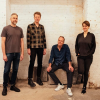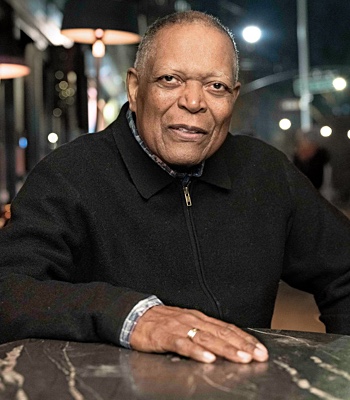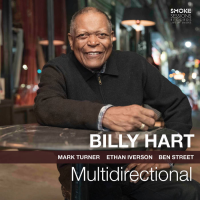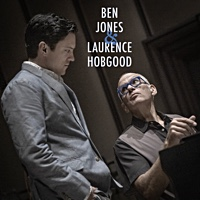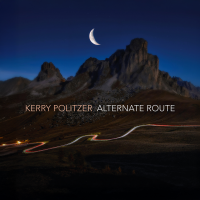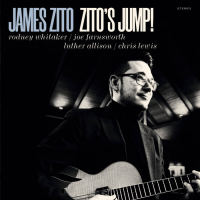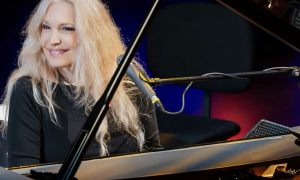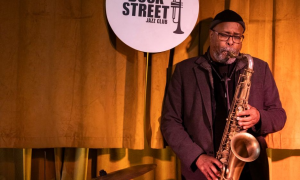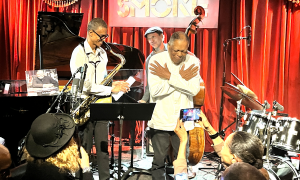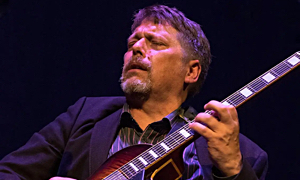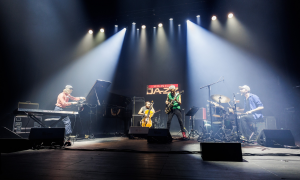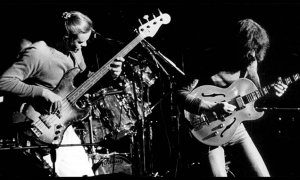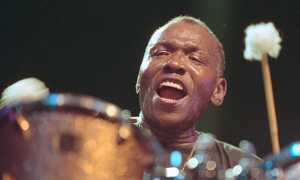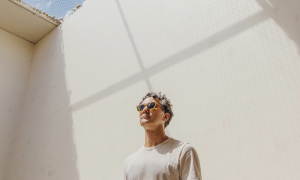Home » Jazz Articles » Live Review » Nik Bärtsch’s Ronin with Sumie Kaneko at MIT
Nik Bärtsch’s Ronin with Sumie Kaneko at MIT
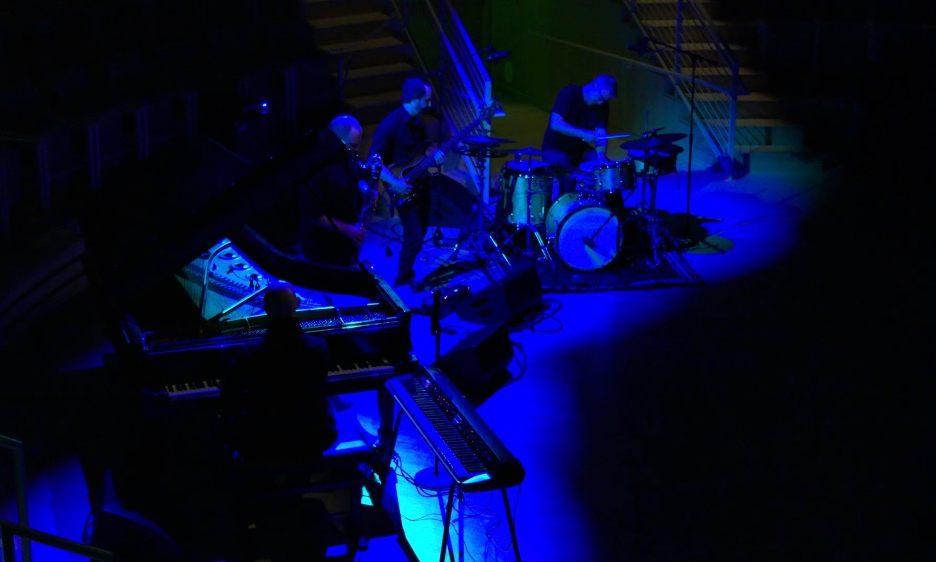
Courtesy MIT Video Productions
Thomas Tull Concert Hall
Massachusetts Institute of Technology
Boston, MA
October 4, 2025
At the close of a week-long residency at MIT—where Swiss pianist Nik Bärtsch served as both muse and subject to a group of "freaky scientists," as he affectionately called them—something extraordinary came to fruition. The program had seen Bärtsch immersed in neurological studies, AI-driven musical experiments and a collaborative workshop between his band Ronin and the university's own music students. Yet all the quantification and technological playfulness found its truest expression in a culminating performance on October 4, when the cerebral gave way to the visceral.
The evening opened in soft contrast to the week's academic backdrop when Sumie Kaneko, master of the koto, took the stage alone to perform a traditional piece that felt as if it were pulled from a still pond. Her crystalline, quietly unsettled sound seemed to ripple against the boundaries of the Thomas Tull Concert Hall, each note shimmering like a reflection struggling to hold its shape. Her fingers bent the strings into a trembling equilibrium between serenity and tension, resolving only to dissolve again. It was a performance that didn't simply open the evening; it cleared the air, as though the room needed to exhale before welcoming Bärtsch's equally flowing yet meticulous world.
When the pianist appeared, he did so with the deliberate calm of someone about to dive. And that he did, as he embarked on his solo expedition, "Modul 55," not at the keys but inside the piano itself. At his touch, its interior became a laboratory of resonances, plucking, muting and coaxing its internal anatomy to life. Gradually, he transitioned to the keyboard, where patterns emerged and folded back upon themselves. The result seemed less an outward expression than an implosion, concentric and recursive. Flesh and spirit traded places with each gesture, as though he were conducting a dialogue between matter and consciousness.
Then came a moment six years in the making: the world premiere of a piece for piano and koto composed by Bärtsch, which had only just recently acquired the title "Mystic Dog." If Kaneko's opening piece was a mirror and "Modul 55" a lens, "Mystic Dog" was a prism splitting light into a dazzling interplay of timbres. Piano and koto circled each other like celestial bodies, exchanging gravitational pulls until sparks seemed to materialize. The music hovered between structure and suspension, being both timeless and urgent. Its textures evoked the imagery of the 2006 video game Ōkami, in which the Shintō sun goddess Amaterasu, in the form of a wolf, restores life to a decaying world through the power of art itself. The duo's collaboration was animated by the same divine brushstrokes, transforming sound into a medium of rebirth.
After this luminous intersection, the entrance of Ronin provided a satisfying pivot from mysticism to mechanics. In the wake of the Rubik's cube left delightfully scrambled by the lead-in performances, Ronin's set was its solution, each "Modul" snapping into place with algorithmic precision. Joined by Kaspar Rast on drums, Jeremias Keller on bass, and Sha on bass clarinet and alto saxophone, Bärtsch led his ensemble through a seamless sequence of nanofunk such as only they can articulate.
They started by solving the white cross with "Modul 63," laying down a terrain of gorgeous geometries. Completing the side was "Modul 11," which locked the pulse into a forward-leaning propulsion of drums and bass. Out of this momentum rose Sha's bass clarinet, serpentine and luminous, tripping into a vibrant, open vista.
The yellow side came together with "Modul 70_51," shifting into a higher cognitive gear. Its dampened bass lines and echoing saxophonic phrases cohered into a dance so immediate and organic that it seemed born of a collective hyperawareness, lending oxygen to Sha's wisps of circular breathing.
Next was the red side. "Modul 32" began delicately enough with a bit of sparkle in anticipation of shadow. Rast, ever the rhythmic architect, relieved his right hand of the drumstick in favor of a most precise shaker, even as his left elicited echoes from the snare's rim. Meanwhile, Bärtsch broadened his own wingspan across two keyboards. Orange followed in "Modul 23," from which saxophonic tongue clicks leapt with purpose. The flow built inexorably, layer upon layer, until it achieved escape velocity, fueled by Bärtsch's signature phrasing.
Green and blue completed the solve through two encores. "Modul 17" was anchored in piano and brushed drums, giving the illusion of perpetual motion, of music as a self-sustaining organism. It was the night's tender heart, a reminder that even the most complex systems contain warmth at their core. Lastly, "Modul 35" offered high-register pianism that cascaded into a brilliant groove, the sonic equivalent of a flush surface gleaming under stage lights.
By the concert's end, the audience had witnessed more than a performance. It was a synthesis of technology, tradition and transcendence. What began as a research experiment concluded as something far more human: a ritual of order emerging from chaos, where every note proved that the frontier between mind and music is still, and always will be, porous.
Tags
Live Review
Nik Bartsch
Tyran Grillo
United States
Massachusetts
Boston
Kaspar Rast
Jeremias Keller{{ on bass, and {{Sha
PREVIOUS / NEXT
Support All About Jazz
 All About Jazz has been a pillar of jazz since 1995, championing it as an art form and, more importantly, supporting the musicians who make it. Our enduring commitment has made "AAJ" one of the most culturally important websites of its kind, read by hundreds of thousands of fans, musicians and industry figures every month.
All About Jazz has been a pillar of jazz since 1995, championing it as an art form and, more importantly, supporting the musicians who make it. Our enduring commitment has made "AAJ" one of the most culturally important websites of its kind, read by hundreds of thousands of fans, musicians and industry figures every month.




